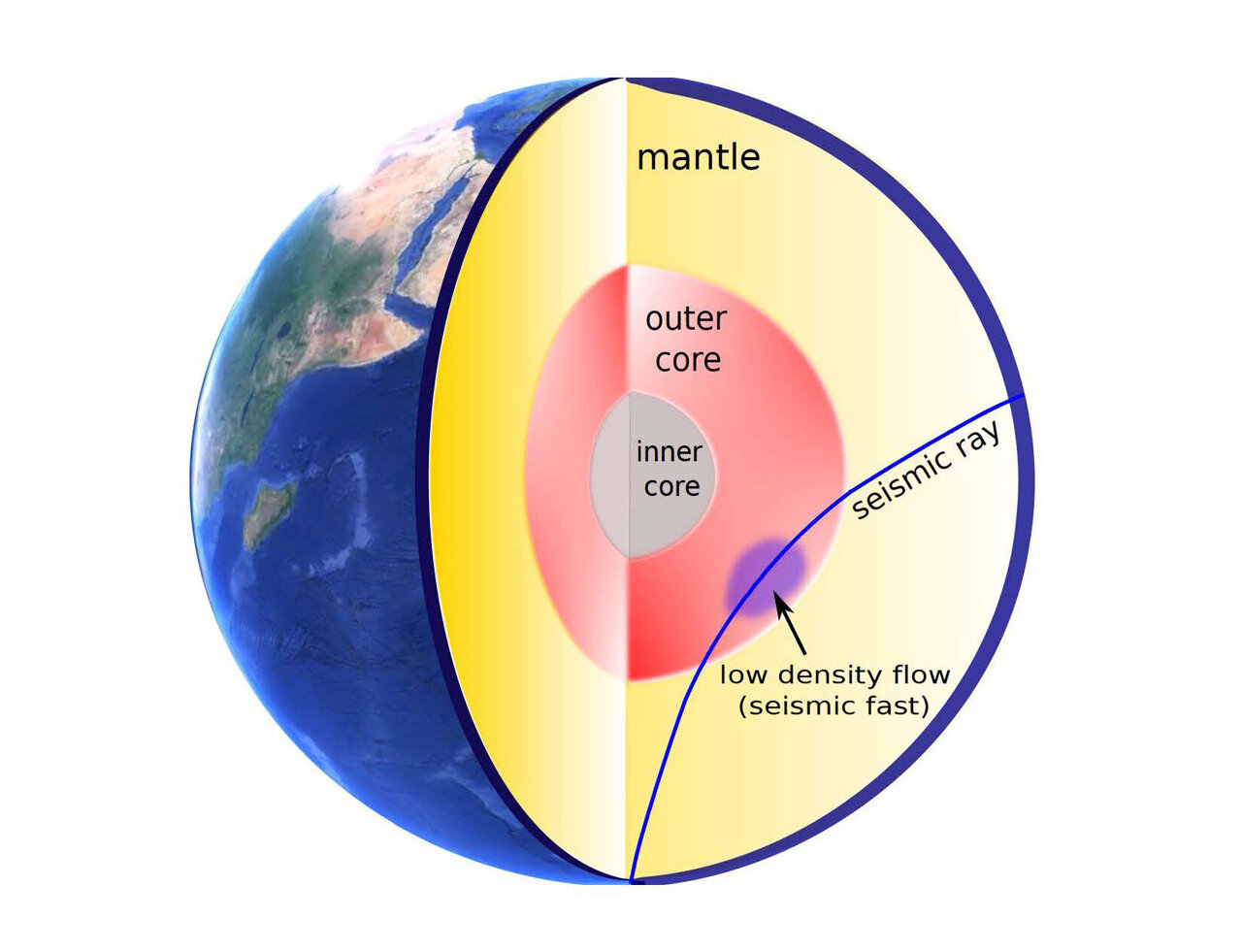Earth’s Core Rotation: Earth’s composition is more complicated than we think and is changing continuously every day. The inner part of the planet can be divided into three different layers: crust, mantle, and core. Several theories suggest that Earth’s core is rotating independently of our spinning planet. latest research by scientists has revealed that the rotation speed of Earth’s core is slowing down dramatically and has even reversed.

Is the Rotation Speed of Earth’s Core Slowing Down?
Discovery of the Inner Core
Danish seismologist Inge Lehmann discovered the planet’s inner core in 1936. Since then, scientists have continued to debate its rotation speed and direction. One reason scientists have limited evidence to prove their point is that it is impossible to observe or collect direct samples of Earth’s deep interior. Most of the research and studies are based on variations between waves of similar strengths passing through the core at different times.
Evidence of Core’s Rotation Changes
Data from seismograms from repeated earthquakes and explosions on Earth indicate that the rotation speed of the solid inner core has been constantly degrading compared to the Earth’s surface over the past few years. According to a new finding published in the journal Nature in June this year, the research not only validates the Earth’s slowdown but also supports scientists’ claim, made in 2023, that the core’s deceleration is part of a decades-long pattern of slowing down and speeding up.
The Impact of Core Rotation on Earth
The independent rotation of Earth’s core has significant implications for the planet’s geodynamics. The core’s movement affects the geodynamo process, which generates Earth’s magnetic field. Changes in the core’s rotation speed and direction could potentially impact the strength and configuration of the magnetic field, which in turn influences the planet’s climate and the behavior of the atmosphere.
Geomagnetic Reversals
One of the most dramatic effects of changes in the core’s rotation is the phenomenon of geomagnetic reversals. These are periods when Earth’s magnetic field flips, causing the magnetic north and south poles to switch places. While such reversals are natural and have occurred many times throughout Earth’s history, the exact triggers and timing are not fully understood. The slowdown and potential reversal of the core’s rotation could be linked to these geomagnetic events.
The Role of Seismology in Understanding Core Dynamics

Seismology plays a crucial role in studying the Earth’s core. By analyzing the travel times and paths of seismic waves generated by earthquakes, scientists can infer the properties and behaviors of the inner layers of the Earth. This method has been instrumental in revealing the independent rotation of the core and its varying speeds.
Advances in Seismic Technology
Recent advancements in seismic technology have allowed for more precise measurements and better understanding of the Earth’s interior. High-resolution seismographs and improved computational models enable researchers to detect subtle changes in the core’s rotation and gather more accurate data.











